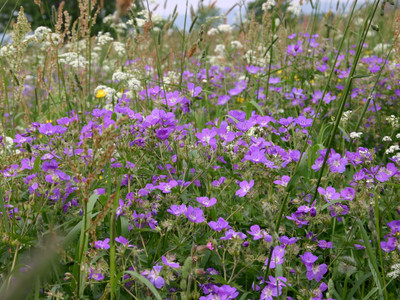Die Route führt durch „typische“ Luchslebensräume, vorbei an Felsen, Mooren und durch wilde Wälder.
“Wilderness” in Germany – does it even still exist?
The Harz Mountains are wilder than you think. In Harz National Park, a wilderness of fascinating extent and beauty is developing. Here, a natural landscape exceptional in Central Europe is evolving on nearly 250 km2. The national park protects these valuable areas permanently in order to allow nature to develop freely and to preserve biodiversity.
Wilderness comes with wild animals. ‘The presence of a single bear changes the flavour of an entire landscape’. This statement originates from Aldo Leopold, a forestry scientist and co-founder of modern ecology in the USA. After extinction, it took the first wild bear 170 years before stepping on German ground again in the Bavarian Alps. The idea that wild bears will return at all was hardly imaginable until just a few years ago. Wolf and lynx have been returning soft-footed to Germany in the meantime and might change your taste of our native landscape as well.
National parks provide wild animals with large undisturbed retreats to survive. There are still way too few of these in Germany. Today, hardly more than half a percent of the German national territory is wilderness area. Mostly, these are the core zones of national parks. But the designation of new protection areas is often accompanied with considerable resistance. On the other hand, the national strategy for biodiversity by the federal government claims that wilderness should be allowed on 2% of Germany’s area; in the forest, a natural forest development should follow on 5%. In addition, more than 50 million visitors of our national parks give rise to a substantial added value. Reason enough to give wild nature another chance in Germany.
You can experience the beauty and fascination of wild nature particularly well on small hiking and mountain tracks on the “Hohnekamm” in Harz National Park. Follow us on a hike right into the middle of an area that lynx are exploring again these days, in which they are hunting for prey, but are always avoiding people. The route goes through typical lynx habitat, past rocks, bogs and through wild forests. Off we go!

